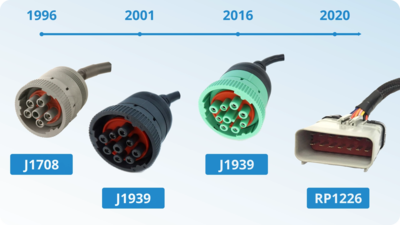
Pre and post trip Vehicle inspections are integral to your maintenance and safety programs. Let's break down the vehicle inspection and answer some common questions.
When to conduct a vehicle inspection
According to FMSCA, the driver should conduct pre-trip inspection each day the driver uses the vehicle. The driver should know how to identify any problem. Pre-and post-trip inspections are essential, saving time and money by preventing downtime on the road and reducing the risk of a mechanical related safety incident.
The vehicle's pre-trip should be conducted before the vehicle departs its parking location for the work shift. The pre-trip inspection ensures that all mechanical systems on the vehicle are safe and in working order for the day ahead.
Post-trip inspection should be completed when the vehicle returns to its parking area after the work shift. The post-trip is as essential as the pre-trip; it is necessary to check all the vital components at the end of the workday and ensure no issues have developed. If a problem is found, mechanics often have enough time to repair the matter before the vehicle departs again for its next trip.
How to conduct a vehicle inspection
There is a proper way of conducting the vehicle inspection to match the standard of FMSCA. First, you need to find a suitable place to inspect; it should be on pavement and away from moving vehicles, use wheel chocks for safety prior, wear appropriate safety equipment like a vest, gloves, and eye protection.
The vehicle inspection should include:
- Check for leaks
- Engine Oil level
- Engine Coolant level
- Belts, water pump, alternator, and power steering pump
- Check the frame for cracks or unusual wear
- Check the springs, shock absorbers, and suspension components for unusual wear or cracking
- Check Steering linkage and joints
- Check the brake system, including brake chambers, hoses, and drums
- Check Tires for adequate tread and unusual wear
- Check the headlights, parking, brake, and turn lights
- Check the wipers for normal function
- Ensure mud-flaps and bumpers are in place and undamaged
- Check the mirrors for cracks or damage
- Check registration and insurance documents
A driver-vehicle inspection report (DVIR) is a form that the driver should fill when performing an inspection. These forms are often structured like a checklist that asks the driver to check and confirm each part in the above list. The driver is responsible for completing the inspection, recording it on the DVIR, and turning it into the motor carrier.
Does this mean more paperwork
A first you might be thinking, great more paperwork for my drivers and more paperwork for me, however digital DVIR's are here for the rescue. It's now easier than ever for fleet managers and drivers to stay on top of safety and even though digital DVIR's are not a new thing how they integrate into your fleet management software is. This is where TruckSpy comes in, we are a complete fleet management platform. From DVIR's and load management to hourly wage reporting and fuel fraud analysis, we do it all so you can operate more profitably.
The Do-It-All Fleet Management Platform.
Start Today, No Contract. No CC.
FMSCA Compliance
In most cases, the pre and post-trip inspections that your drivers perform will never be reviewed by a compliance agency unless you are selected for a DOT audit. You should maintain vehicle inspections and repair reports for 14 months from the date of creation if you are audited.
In addition to inspections, any of your commercial vehicles can be inspected by law enforcement. The officer may note mechanical issues, issue a citation, and/or place the vehicle out-of-service until the issue is resolved. Law Enforcement inspections are notoriously stringent.
Any issue identified or a clean inspection identified by law enforcement is automatically reported to the FMCSA. These inspections impact the carrier's SMS score - clean inspections help the score, and issues hurt the score.
Top Violations and the Importance of Pre-Trip Inspections
The list of top violations in the trucking industry underscores the critical importance of meticulous pre-trip inspections. From "inoperable required lamps" and "inoperative turn signals" to issues like "tire-flat and/or audible air leak" and "no or defective lighting devices," many of these common violations are easily detectable during a comprehensive pre-trip check. Furthermore, more severe violations such as "brake out-of-adjustment" and the absence of a "periodic inspection proof" highlight the potential risks of neglecting this essential routine. A diligent pre-trip inspection not only ensures compliance with regulations but also significantly enhances road safety. By identifying and addressing these issues proactively, drivers can prevent costly fines, reduce the risk of accidents, and ensure the smooth operation of their commercial motor vehicles. In essence, a thorough pre-trip inspection acts as the first line of defense against many of the most frequent violations faced by carriers.
Final Thought
Pre and Post-trip inspections are a significant pain to a carrier and an even bigger pain to the driver. However, they are essential to ensure that your fleet is operating safely and efficiently. Training your drivers to complete thorough vehicle inspections is tough, but you will reap the rewards once you get it right.
Recent Blogs
by Elyse Byers
July 5, 2024




